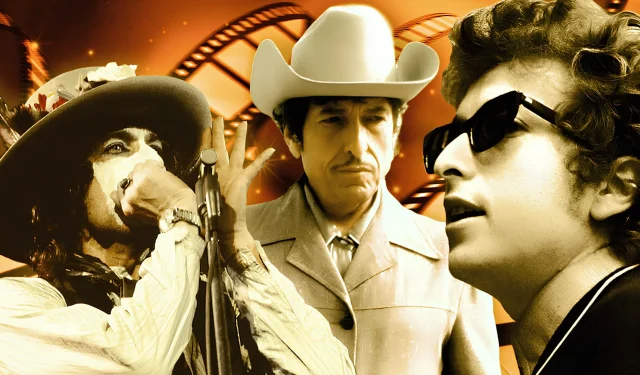
The debut of the Bob Dylan biopic A Complete Unknown has introduced countless viewers to the legendary folk artist, prompting many to delve deeper into his extensive career not fully captured in the James Mangold film. In a recent interview with Nardwuar, actor Timothée Chalamet expressed his willingness to reprise his role as Dylan, stating, “We could do part two and three. It depends how people react.” Given Dylan’s legacy marked by reinvention and evolution, there is a wealth of material beyond the years 1961 to 1965 that Chalamet portrayed.
Many films about Dylan exist, yet aficionados may be eager to see some of the more obscure chapters of his career dramatized on screen. Although Dylan’s daring transition to electric music is widely recognized, it would be equally compelling to explore his born-again Christian phase, various musical comebacks, and collaborative efforts with the supergroup the Traveling Wilburys. Dylan’s life is multifaceted, and A Complete Unknown represents just a small fragment of his full narrative.
8 The Motorcycle Accident
1966 – 1968

The conclusion of A Complete Unknown featured Chalamet’s Dylan riding off into the sunset on a motorcycle, a seemingly neat ending that for longtime fans suggests the possibility of a sequel. In 1966, amidst a period of intense touring and writing, Dylan was reportedly involved in a motorcycle accident that nearly claimed his life (via Far Out). While skepticism surrounds the incident, Dylan reportedly used it as a reason to retreat from the public eye and reduce his touring schedule.
The years following the accident remain shrouded in intrigue, making a potential sequel an opportunity to dive into the creation of The Basement Tapes with the Band and delve into his shift towards a more compact poetic style on albums like John Wesley Harding. Dylan also welcomed his first son, Jesse, into the world during this time, adopting a quieter domestic life with Sara in Woodstock, New York. A film focused on this period could shift towards a more introspective narrative, showcasing Dylan’s rejection of celebrity in favor of a more grounded existence.
7 Country Bob
1969 – 1971
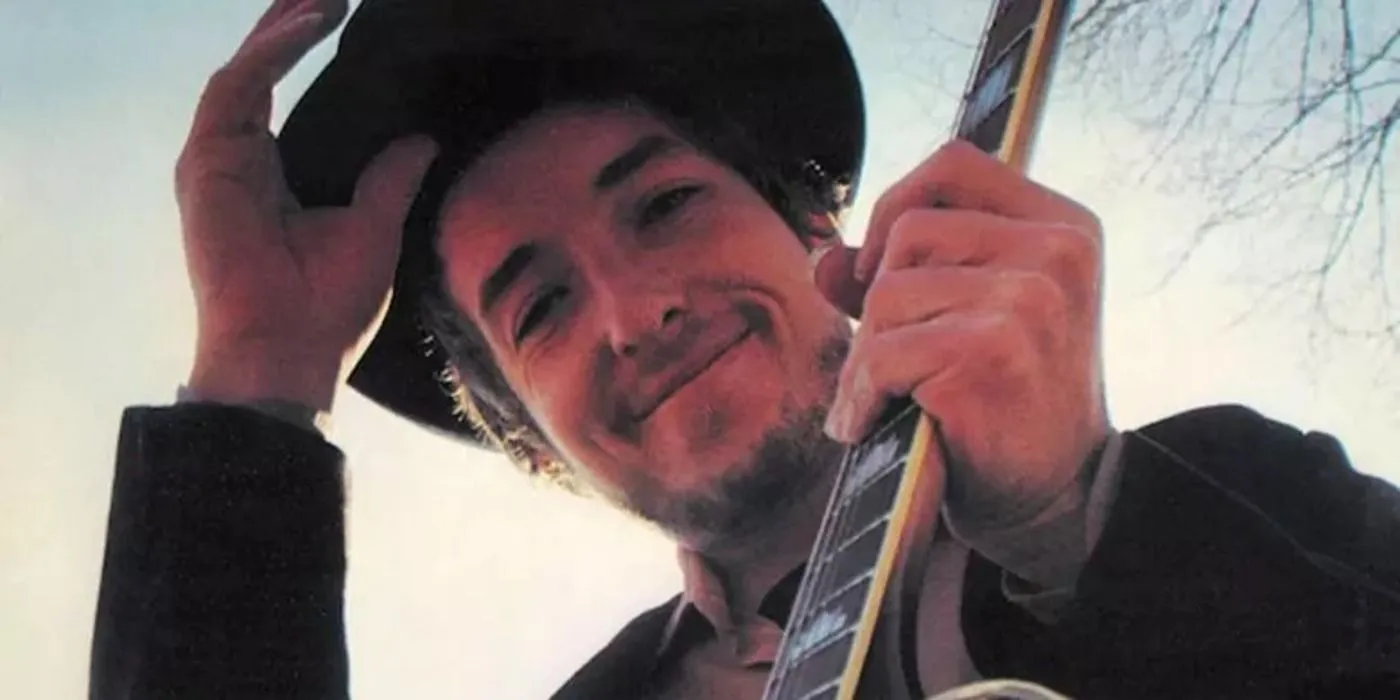
New fans drawn to A Complete Unknown may find their interest piqued by director James Mangold’s previous success with the Johnny Cash biopic Walk the Line. It was a delightful surprise to see Boyd Holbrook portray Cash, given Joaquin Phoenix’s aging out of the role. Notably, Dylan and Cash’s musical journey didn’t end at the Newport Folk Festival; in the late 1960s, Dylan fully embraced country music with his ninth studio album, Nashville Skyline.
Dylan’s brief but intriguing country phase offers a compelling narrative that would be captivating for a capable director familiar with both legends. Observing the behind-the-scenes dynamics that led to their iconic duet on “Girl from the North Country” would be a treat for music enthusiasts. The Bootleg Series release Travelin’ Thru reveals that their collaborative spirit extended well beyond this, and Dylan’s foray into country music continued with albums like New Morning.
6 Bob Dylan: The Movie Star
1973
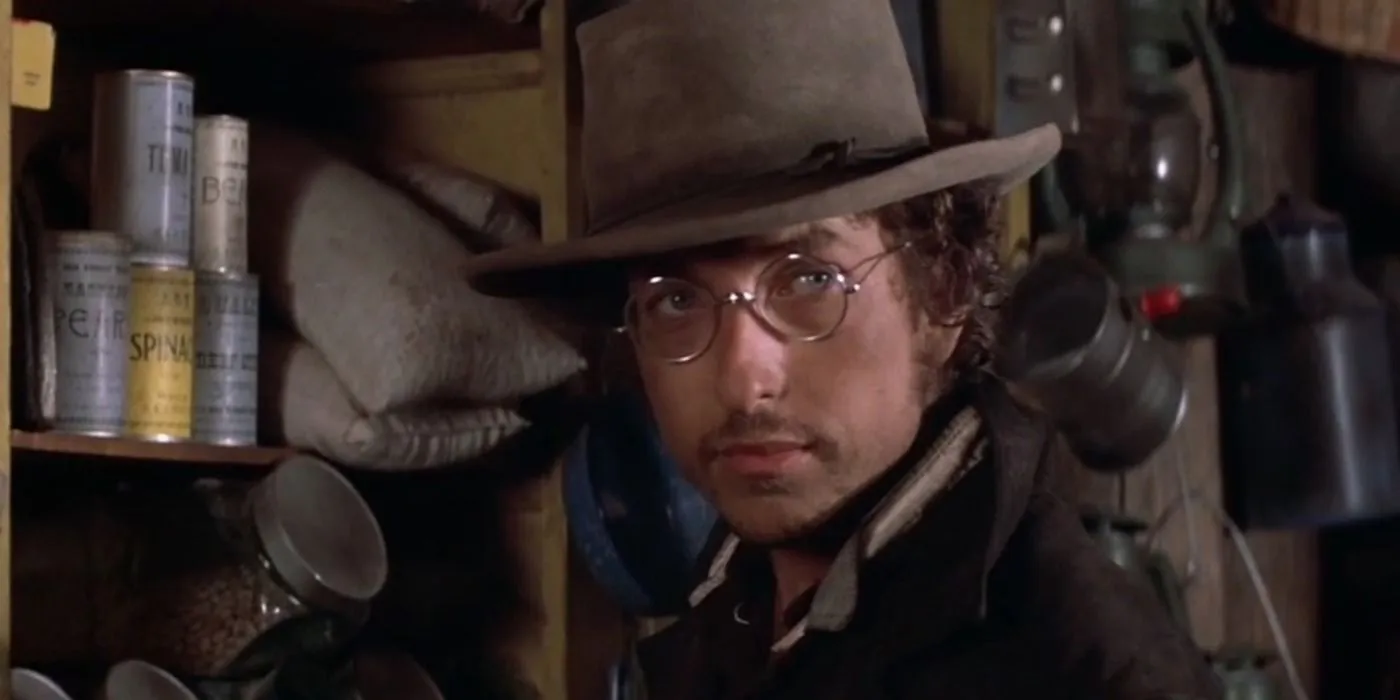
The making of Pat Garrett and Billy the Kid was riddled with challenges, including budget overruns and crew illnesses, compounded by director Sam Peckinpah’s personal struggles with alcoholism (via The Playlist). Exploring Dylan’s interactions with his co-stars, such as Kris Kristofferson, during the making of this tumultuous cult classic presents an intriguing examination of the interplay between the music and film industries. Notably, this film produced the unforgettable Dylan classic “Knockin’ on Heaven’s Door,” further cementing its legacy.
5 The Rolling Thunder Revue
1975 – 1976
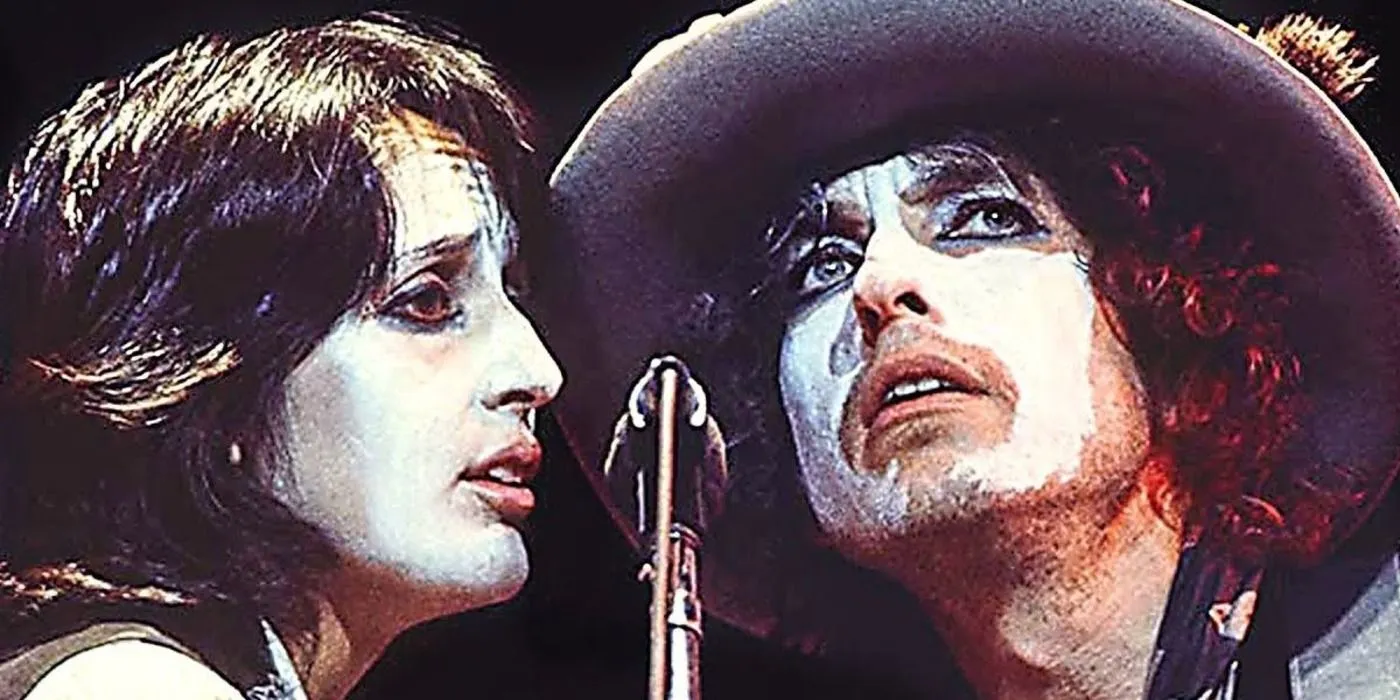
After an extended hiatus from touring, Bob Dylan made a grand return in 1974, but the following year he took it to another level with the Rolling Thunder Revue—a captivating ensemble of musicians traveling across the country. This era was marked by exhilarating performances alongside Joan Baez, Joni Mitchell, Allen Ginsberg, and Patti Smith, creating an electrifying atmosphere on stage.
In 2019, filmmaker Martin Scorsese released Rolling Thunder Revue: A Bob Dylan Story, which cleverly blended factual accounts with fictional elements, shedding light on this vibrant period. A film focusing specifically on the Rolling Thunder Revue would present behind-the-scenes looks at the recording of iconic albums like Blood on the Tracks and Desire. This was both a thrilling musical chapter and a tumultuous personal one, as Dylan poured his emotional struggles from his crumbling marriage into his art. During this time, he returned to his roots of protest music with “Hurricane,” fighting for the cause of Rubin Carter, a wrongful conviction case that adds depth and weight to any cinematic retelling.
4 Born Again Bob
1979 – 1981
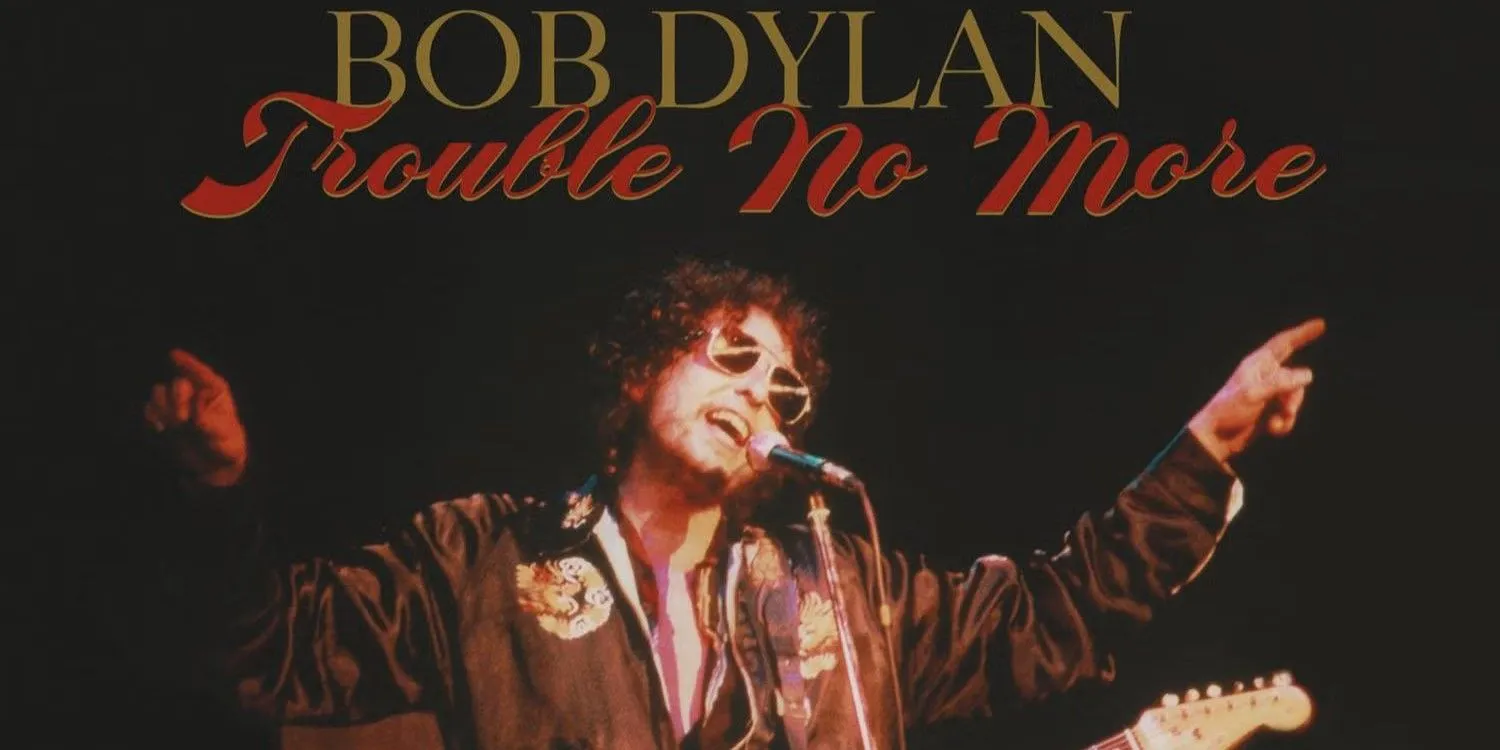
Dylan’s career has seen numerous transformations, yet one of the most surprising periods came when he embraced born-again Christianity in the late 1970s. This era began with the release of the gospel blues album Slow Train Coming and continued through a trilogy of albums, including Saved and Shot of Love. During concert performances, Dylan’s fervent biblical messages dominated, as he often eschewed secular music in favor of spiritual themes.
The complexity of this transformative phase in Dylan’s life remains a subject of speculation, with future projects raising questions regarding his current spiritual beliefs following those intense years. A film could vividly illustrate this chapter, including the extraordinary incident where he claimed to have encountered a vision of Jesus in a Tucson hotel (via Forbes). Given Dylan’s messianic image among fans, a narrative focused on this period could unearth deeper aspects of his artistic legacy.
3 Losing His Way In The 1980s
1985 – 1988
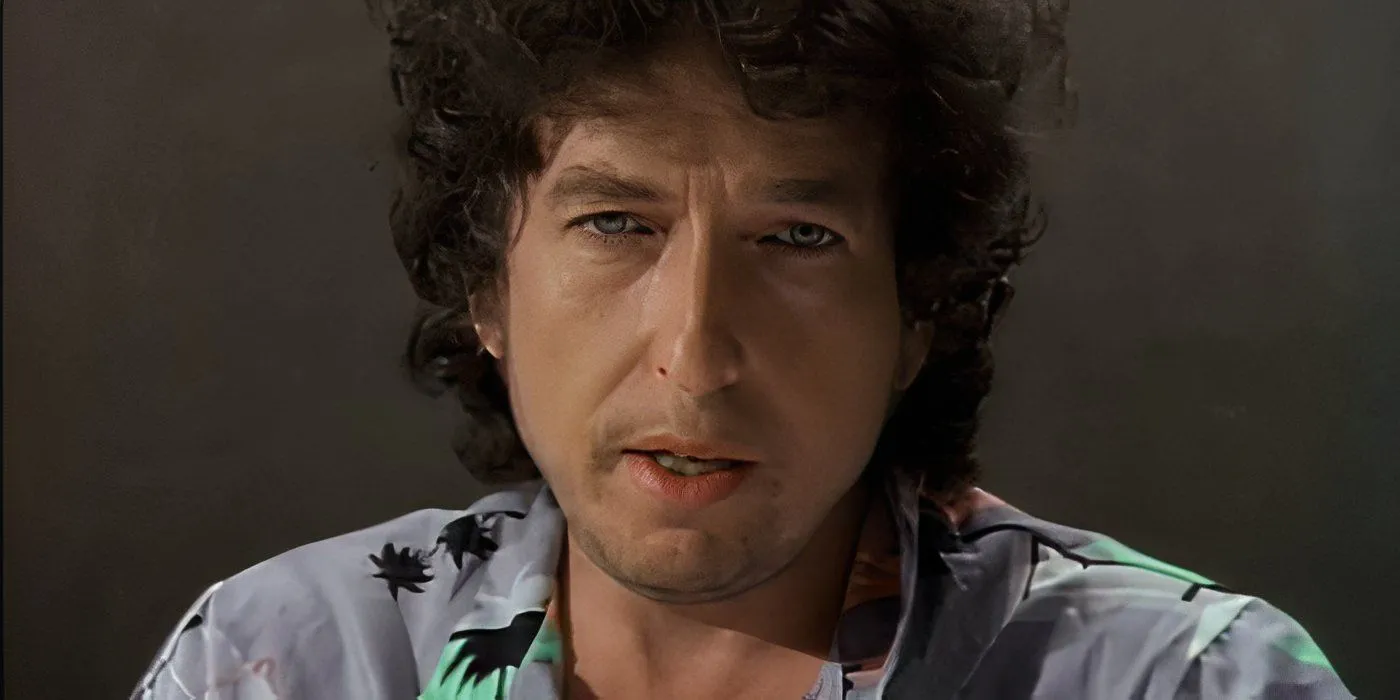
The 1980s proved to be a challenging decade for many iconic musicians, including Bob Dylan, as the emergence of New Wave, synth-pop, and post-punk left him feeling like an artifact of a bygone time. Dylan’s lyrical prowess seemed compromised by overly polished production techniques during this era; attempts at adapting to contemporary trends through songs like “Tight Connection to My Heart” and the lackluster film Hearts of Fire suggested he was struggling to find his footing.
Once regarded as the voice of a generation, Dylan found his work overshadowed and perceived as less relevant during the individualistic and self-indulgent culture of the Reagan administration. A cinematic portrayal of this transitional period would reveal that even celebrated artists can experience artistic droughts. Ultimately, Dylan would rebound, highlighting the resilience of genius amid adversity.
2 The Traveling Wilburys
1988 – 1991
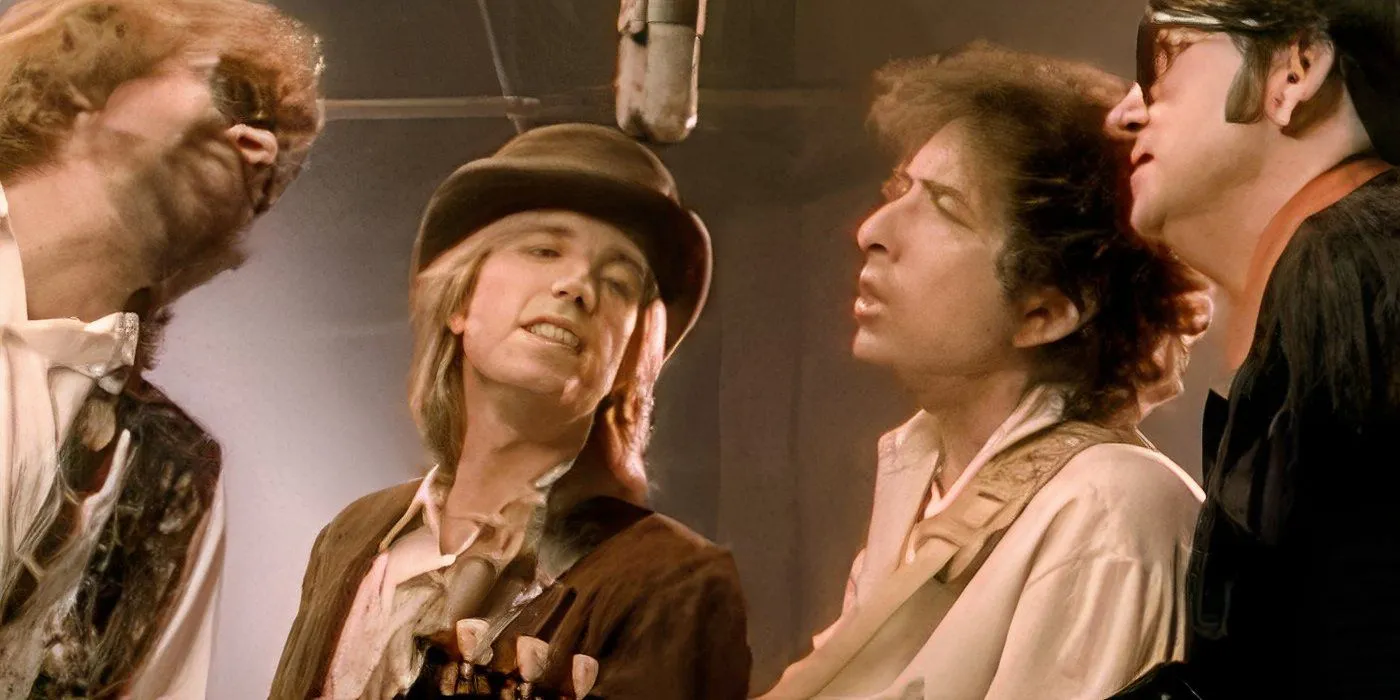
If Timothée Chalamet continues to embody Dylan in sequels exploring various career phases, an exhilarating direction would be an Avengers-style collaboration featuring the Traveling Wilburys. This legendary supergroup combined forces from icons like George Harrison of The Beatles, Jeff Lynne from ELO, Tom Petty, Roy Orbison, and, naturally, Dylan. As perhaps the most famous supergroup in history, the Traveling Wilburys revitalized Dylan’s artistic spirit, allowing him to enjoy music once more and fostering a sense of camaraderie reminiscent of his early band days.
Their collaboration produced classic hits such as “Handle with Care,”and it marked the beginning of a creative resurgence for Dylan, culminating in the release of his acclaimed 1989 album Oh Mercy. Dylan detailed the process behind this significant album in his autobiography, Chronicles: Volume One, providing ample material for a compelling film adaptation. In closing out the 1980s with this fruitful collaboration and one of his most celebrated albums, Dylan reaffirmed his ability to continually reinvent himself.
1 Not Dark Yet
1997
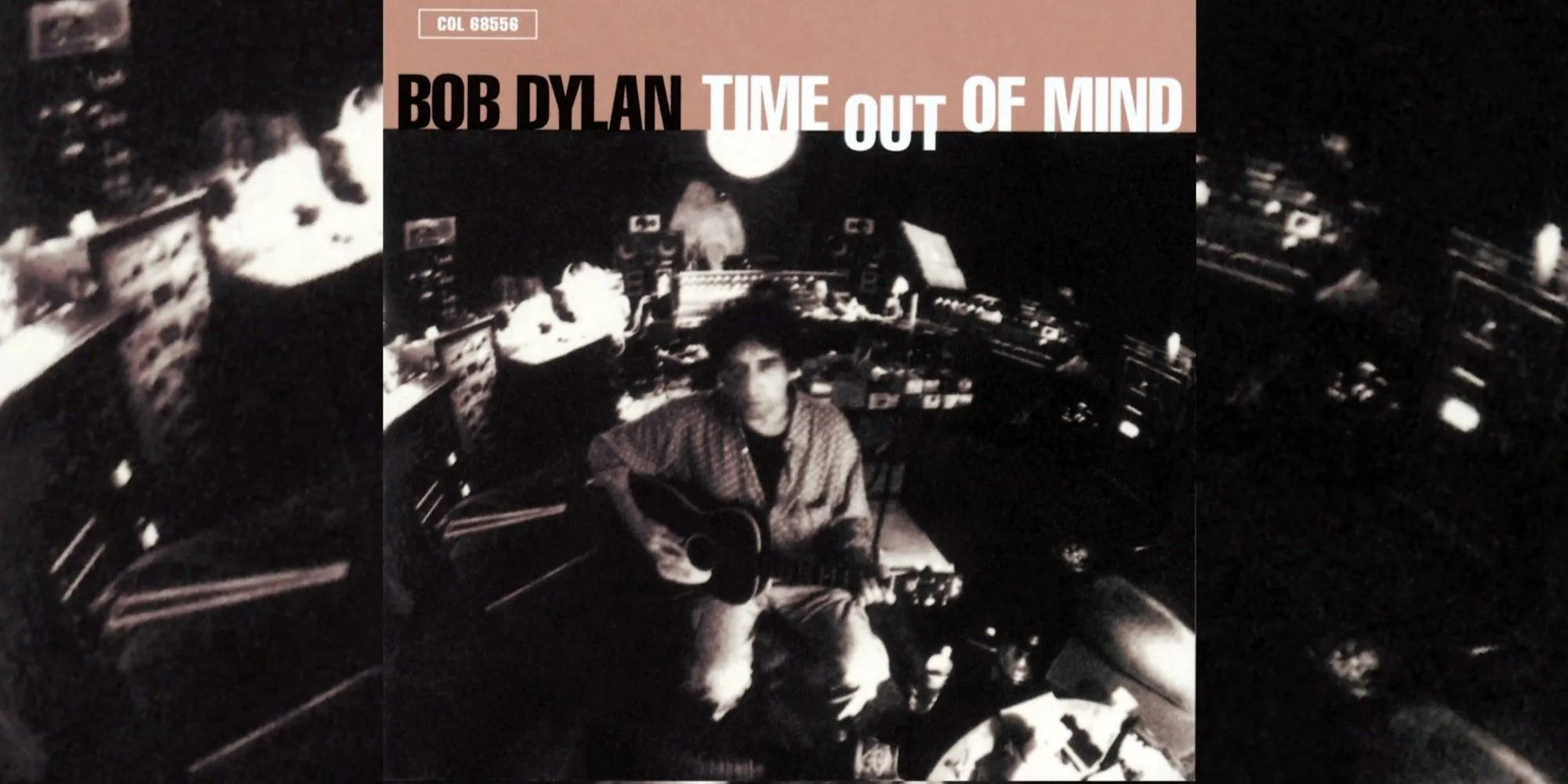
In his later years, Bob Dylan became more reticent about his private life, creating a potential film centered around his album Time Out of Mind a captivating premise. This album is often regarded as containing some of Dylan’s best work, showcasing an artist who confronts mortality while hinting at farewell themes. This late-career masterpiece earned the Grammy for Album of the Year and was released during a pivotal moment in Dylan’s life, shortly after he survived a serious heart infection.
The ominous atmosphere of Time Out of Mind reflects Dylan’s near-death experience (via LA Times). A film capturing Dylan’s evolution and creative rebirth, juxtaposed with the challenges of this phase, would perfectly encapsulate his journey, revealing how he continues to defy audience expectations. Bob Dylan’s complexity and allure make him an extraordinary subject for cinematic exploration, and this narrative would provide a glimpse into his enigmatic and more solitary years.
Sources: Nardwuar, Far Out, The Playlist, Forbes, LA Times




Leave a Reply